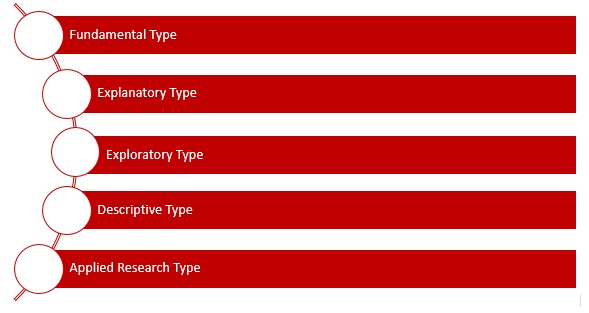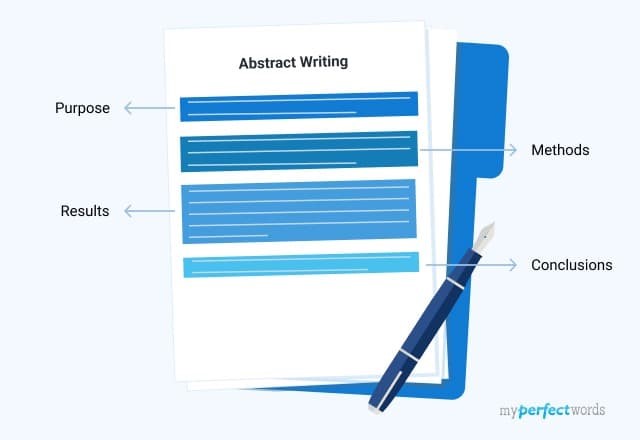What is Research? Definition, Methods, Types, Process & Examples
When you want to persuade someone or express an opinion, you write essays. But when you want to analyze data, present findings, and contribute to a specific field (theme), it is called research. At least, this is what grown-ups do.
They choose a topic and then write a research paper on it for assorted reasons. Sometimes to add value to the resume, sometimes to boost the higher education prospects, and sometimes just because you need to pass the course with an A+ grade.
So, no matter what the reason, if research writing is this necessary, as a student, you must know the following:
- What is research writing?
- What are its types?
- What is the effective method?
- What does the process look like?
A Comprehensive Guide for Researching Writers
The word research comes from the French word ‘rechercher’. It means to search again and to seek thoroughly. So, collectively, it means repeatedly reviewing the data to find something unique that can be used to draw a new conclusion.
However, if we look at the official definition, it says that research is a systematic investigation, often focused on discovering new facts. Apart from this, this structured process also helps an individual understand the concepts and develop solutions to existing problems. In addition, it involves collecting and analyzing data to answer questions, test ideas, or contribute to an already written paper.
What Does a Researcher Do? Let’s Dig In
If you break it down further, you will realize that it is not just limited to collecting data but also analyzing it in a logical and organized manner. This way, the publisher finds it appealing enough to publish, and a wider audience gets access to it. Moreover, it does both: ignites and satisfies the reader’s curiosity by identifying patterns, relationships, and valuable insights in the records. You can seek peer review from experts to give you feedback. Then, you can acquire thesis editing services to see your work and improve it for publication. Last but not least, you should create a report about your research and share your findings with others who might be interested.

Thus, when you gather information from various sources with the help of experiments, surveys, interviews, and literature reviews, it is just for you. It is rather for the several potential readers who will be going through your paper.
More importantly, a person who investigates is also responsible for concluding based on their analysis. This later helps them in writing recommendations or future research questions.
Now, Let’s Find Out Why It Is Important
The primary reason why anyone must do research is that it helps humankind and its surroundings in countless ways. For example, the process of investigating helps us understand the world around us and address the complex issues.
Apart from this, the exploration leads to new inventions, technologies, and practices, which means you see the world with a new pair of glasses every single time. Besides this, whenever research takes place, it provides substantial data and understanding that can be used to make better decisions.
Furthermore, the process teaches us to evaluate information and develop logical arguments. In the end, when people read this research, they are able to grasp the findings and then use them to implement them in society. As a result, not just your education sector but also the healthcare and other areas of life benefit.
The Popular Types of Research Writing

In total, there are five major types of investigations that an individual can carry out. We have mentioned the names above. Now, let’s break down each one of them and familiarize ourselves with their subtypes.
#1: Fundamental Study
The very first one is the basic, fundamental type. This is conducted when someone wants to learn about a topic in more depth. So naturally, it is fueled by curiosity and a desire to gain more knowledge with no immediate real-life applications.
This has two categories: theoretical and experimental research. Theoretical investigation is all about focusing on abstract concepts. However, experimental research is related to trials where the individual has to test hypotheses and theories. Thus, when dealing with these study styles, you need to carry out either theoretical analysis or laboratory tests.

#2: Explanatory Analysis
The second type is the one that helps the investigators in digging the truth behind something. For example, how is VR technology changing the educational standards? What is the potential application of quantum computing in medicine? If you notice, you will realise that explanatory themes aim to identify a causal relationship between two phenomena, using the patterns to draw a conclusion. However, this is not a piece of cake. It requires a great deal of concentration, dedicated time, and relevant resources.
Sometimes, it will also demand professional help to complete the research before you can finally send it to a research paper publication service in UK. Additionally, it has two subdivisions, namely longitudinal research and regression analysis. In the first one, the same variables are studied over a while to notice changes, but in the second one, statistical methods are used to highlight the connection between variables.
#4: Exploratory Research
The fourth type, called the exploratory style, is as simple as its name suggests. An individual writes it when there is a theme that is not well understood. Hence, using the exploration techniques, the investigator gathers preliminary data and valuable insights. Later, all of this will be used in explaining the root cause (problem), hypothesis development, and the final verdict.
Moreover, the exploratory study helps the scholar in formulating questions and leaving loops for future examinations. The subtypes include three names. First, we have the literature review, where the scholar is supposed to review the existing literature to identify gaps. Second, is the case studies that are analysed in detail. Finally, it’s the pilot study in which feasibility, time, cost, and adverse events are evaluated.
#5: Descriptive Study
The last one, but surely not the least, is the descriptive type of research. This is the most commonly used one because it helps define the characteristics of a population or a specific concept that is under study. Moreover, this form of investigation is different from the rest of them due to the nature of not answering the how, when, and why questions. It only talks about what happened, which also means it stays in the present. No future, no past.
This one also has three types: survey, observational, and cross-sectional studies. In the survey, a questionnaire or interview format is used to collect data, whereas in the observational type, the target audience is only observed, and the behaviours are recorded. Then, in the cross-sectional study, the researcher is supposed to analyse the data from a population at a given time.
#5: Applied Research
This category is when the researcher is trying to find a solution to a big problem. He tries everything he can for it. He uses the former and expanded knowledge to either help in making informed decisions or to develop innovations. Due to the intrusive nature of this investigation type, when it is implemented in various fields like medicine, business, social sciences, education, etc., the applied study is sure to solve problems generously.
Now, for its types, we have three of them. Primarily, there is clinical research that involves conducting studies to analyse medical treatments and psychological interventions. The next one, technological study, is dedicated to the development of new technologies, whereas the last one, policy research, is only led when it’s time for some policy decisions with the help of trials and field experiments.

Let’s Discuss the Method of Effective Investigation
Any study conducted can only be productive if the correct methods are followed. However, to follow them or at least pick which one you want to use, you must know them. Here is a quick recap for all the scholars. Number one is the quantitative research method. Its entire concentration is on gathering numerical data and applying statistical, mathematical, or computational techniques. In addition, it involves collecting and analyzing data to find patterns, test theories, and make predictions. Thus, it makes it easier to implement in many fields to make the world a better place. Lastly, this approach is all about focusing on quantifiable data rather than opinions and feelings.
- The second is a qualitative technique where the gathered data is analyzed, and it is not numbers. Instead, it is words, images, graphs, audio or videos. The researchers use it to understand people’s experiences, opinions, and feelings in depth. This clearly means the scholar doesn’t have to measure things with numbers but by what people think and why they think that way. As a result of asking such why, what, and how questions, the researcher gets to understand people’s perspectives and meanings.
- The last one is the mixed method of research, in which the researcher needs to combine both quantitative and qualitative approaches. This might sound a little odd, but it genuinely produces excellent and comprehensive solutions to a research problem. The reason? With the mixed approach, your paper gets the goodness of both methods and becomes capable of offering richer insights.
How the Process Flows in 5 Steps
After a detailed discussion on the types of research, now is the time you recognize the parts of research and how to complete writing them in five effective steps.
- Planning and Research
Your initial step must be to understand the assignment and fully grasp the requirements, scope, length, and citation style. If all of these are in order and appropriately displayed, the research will itself be a success. So, start by selecting a topic that is both interesting to you and manageable within the assignment’s constraints.
Then, you need to work on the research questions for which you must develop a clear, focused, and arguable statement. Once done, you can now begin exploring your topic using a variety of sources such as books, academic journals, and reputable websites. Do whatever seems fine, but remember that you are using credible sources. Side by side, you also need to continue planning the structure a Thesis Of your paper.
- Organising Information
So far, you have the data you need and the direction you must move in, so this is the perfect time for organizing the knowledge you have collected. Start by systematically distributing the information and making detailed notes as much as possible. During this process, you must also critically assess the credibility, relevance, and bias of your sources.

Moving on, as you continue to read, highlight key points, and summaries information in your own words, make sure that you are also recording bibliographic details for each source. This will ease the finalizing of the paper for you. Then, simply categories and arrange the research notes according to your outline or main themes.
- Start Drafting
When you finally start writing, you need to focus on getting your ideas down on paper. You can also call it your outline. For the time being, you must only be worried about the outline and how to put it into implementation rather than about perfection. Once done, try to develop your arguments and then present your points logically in the draft. Also, wherever necessary, you must include supportive evidence.
Now, it is totally up to you if you want to use it in the form of direct quotes, paraphrased text, or basic summaries. Whichever way you find better, you can use it in order to cite the sources properly; however, make sure that the analysis and interpretation are all bias-free. Moving on, you should start with writing the introduction, then the body, conclusion, and in the end abstract.
- Revise Your Content
The fourth step is to review your complete research document for clarity and cohesion. This means that you need to check if your arguments are clear, logical, and flow smoothly. Apart from this, you also need to identify the paper’s weak points and provide more evidence or explanation wherever necessary.
Then, as you proceed in proofreading, you must make sure that all your paragraphs are well-structured. None of them must be under-explained or over-explained. Additionally, try to remove all the repetitive parts because they portray a very unprofessional image of the author.
- Edit and Proofread
The final step is about the editing of your draft for grammar and mechanics. In easy words, you need to avoid errors in grammar, spelling, punctuation, capitalization, and sentence structure. You must also ensure that you have used precise and appropriate language in the entire document.
In addition to this, as the author, it is your responsibility to use correct in-text citations and have a complete bibliography or reference list at the end of the document. Similarly, all the formatting must also be in place exactly as suggested by the instructor. Finally, just read your draft again one last time, but this time backwards and louder. This trick will help you catch any remaining errors.
A Quick Example of How to Write the Abstract
While you are still here, here are a few tips that will help you in writing the best abstract possible. Beginning with the definition first, an abstract is a concise summary of a larger work. It could be a research paper, thesis, or even an article.
Therefore, it is important that it gives the readers a quick overview of the draft’s purpose, methods, results, and conclusions. This way, they will be able to decide if they want to read the full text. Some important questions to answer in this quick introduction are: What is your paper about? Why does it matter? What did you do? What did you find? What does it mean?

Hence, the real challenge is to answer all these questions without exceeding the word count limits. Your abstract should look something like this:
This study explored the relationship between excessive screen time and sleep quality in teenagers. We surveyed 300 high school students about their daily screen usage and sleep patterns. The results showed a significant negative correlation, signifying that more screen time was associated with poorer sleep quality. These findings further highlight the importance of screen time management for adolescents’ well-being and suggest a need for further research into specific intervention strategies.
This is a perfect example because it has everything from the ‘why?’ factor (purpose) to the ‘how?’ (method), and from the ‘what?’ (results) to ‘so what?’ (implications). All of these answers must be within 150-300 words. Not a single word more.
Some Introduction Starters to Keep the Readers Glued
There are many tricks and tips for keeping the readers glued to your research paper, from the very first sentence until the last. Here are a few of them, but first, understand that a strong introduction doesn’t just state your topic; it captures attention and establishes why your research matters.
- The easiest way to appeal for attention is by starting with a surprising statistic or fact. This way, you give your readers concrete information, urging them to read the research.
- Another thing you can do is begin with a thought-provoking question. This trick will help you by instantly engaging the readers and positioning your research as a potential solution.
- You can also use an illustrative scenario to hold their attention. Just uniquely describe the problem and try to evoke an emotional connection between the research and the audience.
- Last on the list, you can try mentioning a broad historical, contextual statement or a common misconception. This helps in setting the stage for the reader and makes sure he is keen on the larger conversation.
Three Ways in Which You Can Conclude the Theme
This one is simple too. You have three options. You can conclude the theme by mentioning a broader significance, which means the reader will still be thinking about that question hours after reading the research. Besides this, you can go the full circle and start restating the original idea or theme. The third approach is to close the draft with a lingering question.
But All of This Is So Overwhelming. Where Do I Even Start?
The answer is right before your eyes – Research. You must read and read about your chosen theme until you gather enough information to start arranging it and writing it down.
The Final Words on Research Writing
To sum it up and understand the entire process of research writing, you first need to recognise the different types of research. There are five of them, and each is equally important. Moreover, each one of them has its own purpose and provides useful insights.
Moving on, no matter which one you choose and whichever you go forward with either qualitative, quantitative, or mixed approach, the final results will always be solid. So, start today and make sure to understand what you want to achieve with your research paper. Then, based on your goals, you can choose the most relevant method and type.

